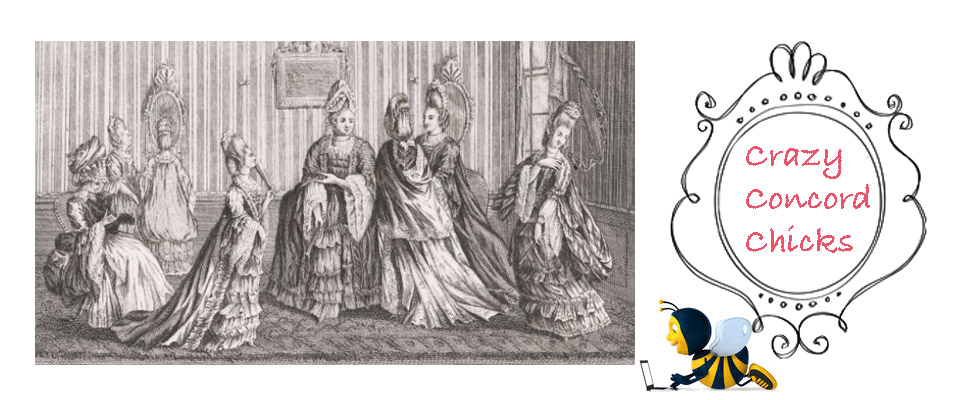Getting Breeched, or Introductions
"In making mee there is no gaine but one,
Which is for labour and for woorkmanship;
Except some time a peece of cloth come home,
As yf that by mischaunce the shere did slip."
-Francis Thynne, 1592
We are none of us born with shears in our hands, so when it comes to recreating eighteenth century clothing, it must be a process of continual discovery and improvement. Interpretation and scholarship never stand still and neither should the living historian. Contemplating period portraiture and dissecting original clothing (mentally, that is) has consumed far more of my waking hours than I care to admit. But careful study is just the beginning of any quest to capture the “look” of a period. Equally important are the months or years spent experimenting. How does a coat hang if the skirts fall at a certain angle, or if the waist’s nipped in to a certain degree? Making and unmaking, redrafting and discarding- it all gets us closer to achieving the look and feel of eighteenth century American clothing.
I’m lucky to know a host of talented tailors who have turned out some splendid suits. All of them will admit (if only to themselves) that there are certain garments they dislike making. Personally, I find breeches to be the most annoying garment foisted on man by Fashion. But because they were the most common nether garments worn by Anglo-American men for more than 150 years, I have no choice but to suppress my loathing and press on. Whence springs this dislike you ask? It has something to do with the geometry of the thing that drives me mad. First, you must get the inseam and outseam length exact or else the knee bands ride up your kneecaps when you sit. (I suppose it is some consolation to know that actual period tailors found this challenging as well- even fashion-conscious George Washington repeatedly cautioned his tailor to make his breeches “longer than the Measure sent last.”) If the seat doesn’t have enough ease, producing the characteristic “derriere pouch,” everything is apt to tear away when you bend over. Most annoying of all is figuring the stride of the “fork” (what we moderns vulgarly call the crotch). Allow too much stride here and you get an uncomfortable wad of fabric where none should be, but allow too little and you will inevitably suffer a spectacular blowout at an inopportune moment. This unpleasantness is compounded by the fact that by the 1770s, the fashionable world expected a man’s breeches to fit like a second skin. Making a garment tight through the knee and thigh, but loose in the seat and crotch can drive one to distraction.
 |
The beau ideal of the well-breeched gentleman: His Excellency George Washington looking relaxed at Princeton. Note the almost wrinkleless expanse of thigh.
|
 |
Ease in the seat- unsightly, yes, but entirely necessary. Red woolen breeches from the MET, ca. 1775 (accession no. C.I.39.13.240). The buttons and adjustment strap on the waistband are later additions. |
Enter the subject of our story. There is one obvious way to ameliorate these difficulties- make your breeches out of something stretchy! Tailors and their clients hit on this idea early on, and the result was breeches made of knit fabric. Wrought of worsted wool or silk, knit breeches solved many of the agonies of breeches making and wearing. It was easy to make them cling to the leg, and the seat and fork were not endangered by one’s morning calisthenics (or horseback riding, or snipe shooting, or tree felling, or whatever appropriately manly activity you might engage in).
So, considering my past failures with breeches made of inflexible broadcloth, I’ve decided to make a pair of knit breeches, which with luck I’ll be showing off to good effect at the Concord Garden Party. Over the coming weeks, I’ll be talking about the history and form of knit breeches, exploring modern fabric choices, agonizing over their construction and reporting on their performance in the field. In the end I hope we’ll all be a bit more educated and maybe even edified! After all, if clothes make the man, then the tailor should be a prime candidate for deification. Perhaps we’d do well to leave it to the poor Scottish tailor in Thomas Carlyle’s Sartor Resartus:
"[T]turning the corner of a lane, in the Scottish Town of Edinburgh, I came upon a Signpost, whereon stood written that such and such a one was 'Breeches-Maker to his Majesty;' and stood painted the Effigies of a Pair of Leather Breeches, and between the knees these memorable words, Sic Itur Ad Astra [thus you shall go to the stars]. Was not this the martyr prison-speech of a Tailor sighing indeed in bonds, yet sighing towards deliverance, and prophetically appealing to a better day? A day of justice, when the worth of Breeches would be revealed to man, and the Scissors become forever venerable.”




























